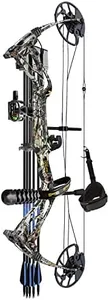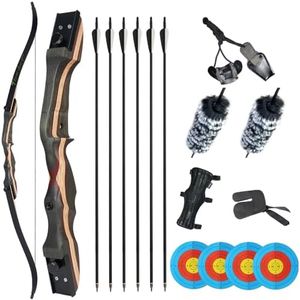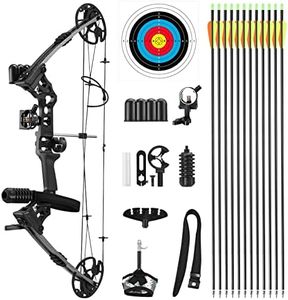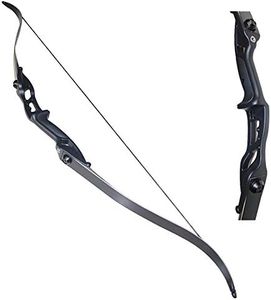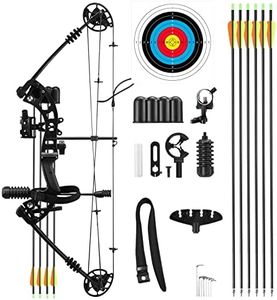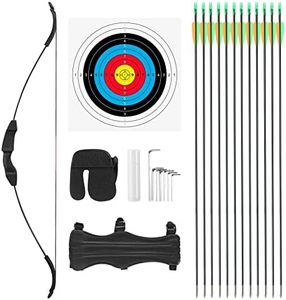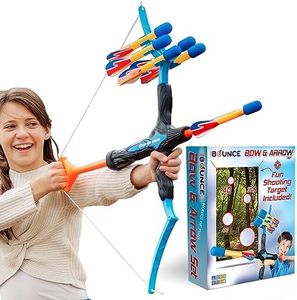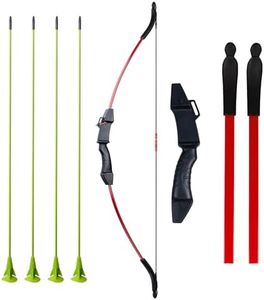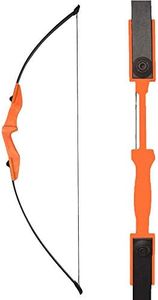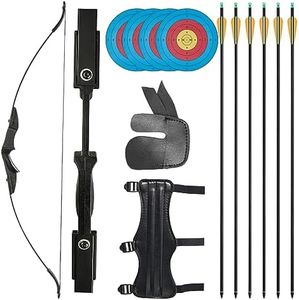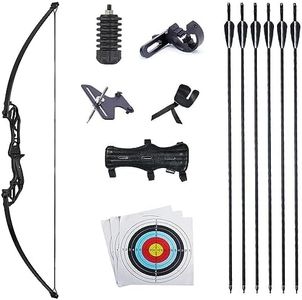We Use CookiesWe use cookies to enhance the security, performance,
functionality and for analytical and promotional activities. By continuing to browse this site you
are agreeing to our privacy policy
10 Best Beginner Archery Sets
From leading brands and best sellers available on the web.By clicking on a link to a third party's website, log data is shared with that third party.
Buying Guide for the Best Beginner Archery Sets
Choosing a beginner archery set can be exciting but a bit overwhelming due to the variety of options available. The main goal is to find a set that helps you learn safely and comfortably while getting the most out of your early archery experience. Focus on features that affect usability, comfort, and allow proper skill development. A good starting set will be simple, reliable, and should match your body size and strength. Keep in mind how you plan to practice—indoor, outdoor, or a mix of both—and choose a set that makes starting out enjoyable.Draw WeightDraw weight is the amount of force needed to pull the bowstring to its full draw length. This is important because it directly affects how easy or difficult it is to shoot the bow, as well as the speed and distance your arrow will travel. Lower draw weights (typically 10–20 pounds) are best for children and absolute beginners, making it safer and less tiring to practice. Medium draw weights (20–30 pounds) suit most teenagers and adults just starting out, offering a balance between learning and performance. Higher draw weights (above 30 pounds) are generally reserved for more experienced archers and shouldn’t be chosen by beginners as they can cause strain and hinder proper technique. Always choose a draw weight that you can pull back smoothly and hold comfortably without shaking, as this builds good form and confidence.
Bow LengthBow length refers to the distance from one tip of the bow to the other when the bow is strung. It affects how stable the bow is during shooting and how comfortable it feels to use. Shorter bows (under 60 inches) are lighter and easier to manage for kids or those with a smaller build, and they are more maneuverable if you plan to shoot in confined spaces. Longer bows (over 62 inches) tend to be steadier during shooting and are typically recommended for taller individuals or those wanted more accuracy, especially during target practice. For most beginners, a medium-length bow matches most body types and is easy to learn with.
Hand OrientationHand orientation determines whether the bow is made for right-handed or left-handed use. This is crucial for comfort and proper shooting technique. Generally, a right-handed person holds the bow in their left hand and draws the string with their right, while a left-handed person does the opposite. Make sure to choose a set that matches your dominant hand to avoid difficulties in learning and muscle strain. If unsure, mimic the motion of drawing a bow and see which hand feels more natural to pull the string with.
Type of BowFor beginners, the most common types of bows are recurve bows and compound bows. Recurve bows are simple, lightweight, and easy to maintain, making them the best choice for most starters who want to learn basic skills. Compound bows involve pulleys and offer more mechanical assistance, making the draw easier at full pull, but can be trickier to set up and maintain. Stick with a recurve bow if you want a straightforward, classic learning experience. Only consider a compound bow if you or your instructor specifically recommends it.
Included AccessoriesBeginner archery sets often come with accessories like arrows, armguards, finger tabs, and sometimes a quiver or target. These items enhance safety and ease your introduction to the sport. Sets that include all basics save you from figuring out compatibility and extra purchases in the beginning. Look for kits that include durable, appropriately sized arrows, and protection gear, especially an armguard and finger tab, as these prevent common beginner injuries and make shooting more comfortable. Ensure the arrows are matched in length and spine (stiffness) to your bow, as this influences safety and learning.
AdjustabilityAdjustability refers to the ability to change the draw weight or draw length as you grow or gain strength and skill. Some bows offer interchangeable limbs to increase or decrease draw weight, and adjustable draw lengths to better fit your growth or improvement. Having an adjustable bow is helpful for young archers or those not sure about their strength, as it allows the set to evolve with you and offer a longer useful lifespan. Consider a set with these features if you want greater flexibility in your archery journey.
